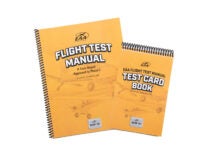These three books from the FAA are excellent sources of aviation technical information. You can download them free in PDF format, but it might be more convenient to have hard copies.
Compared to almost any other avocation, building an aircraft requires one of the greatest ranges of skills and knowledge. The required knowledge set includes competence in materials (metals, composites, and fabrics), reading plans, wiring, plumbing, hydraulics, electronics, avionics, aerodynamics, engines, and many other disciplines. Even the most “detailed” aircraft kits do not allow a builder to complete an aircraft successfully without some background knowledge in these areas. So the question arises: What resources are available that allow a builder to come up to speed in these diverse knowledge and skills areas?
Some obvious answers include working with other experienced builders, studying back issues of KITPLANES, and surfing the internet (and hoping for the best from that!). However, one of the best sources of authoritative technical information needed for building an aircraft may not be so obvious. It’s the FAA! The FAA produces a series of easy-to-read textbooks on every facet of aircraft construction. Many builders do not know how good these books are simply because of their lack of familiarity with them. These texts are easy to comprehend and loaded with color diagrams, charts, and explanations.
It is best to understand the intention of these books. They were developed as a series of three handbooks for aircraft mechanics in a formal trade-school environment. The school provides certification of airframe and powerplant ratings, resulting in the A&P credential designation upon completion. Like any good textbook, they are wonderfully valuable without the formal classroom environment. The series can be identified by a title of: Aviation Maintenance Technician Handbook. Here is a summary of the content organization of the three handbooks:
General Handbook: an explanation of the theory behind aircraft systems, including mathematics, physics, processes, blueprints, materials, hardware, etc.
Airframe Handbook: aircraft structures, electrical systems, instruments, fuel systems, hydraulics, rigging, metal repair, fabric covering, and much more.
Powerplant Handbook: everything about engines and propellers.
The content of these books are available free online at the FAA website in PDF format.
The sheer number of pages will quickly bring you to the conclusion that it might be better to have these in printed format. While you could put your home printer to work, they are also available for purchase in hard copy from bookstores. One benefit of purchasing a hard copy is that the contents have been revised (several times) from the version on the FAA website. You can compare your hard copy version to the publication date on the FAA website. Publishers have broken some of the three original books into multiple volumes due to size issues. Also, the title used by some publishers has morphed into: Airframe & Powerplant Mechanics (from the original Aviation Maintenance Technician Handbook).
Although there is content in these books that doesn’t apply to your homebuilt project (e.g., 737 power brakes!), the vast majority of time spent reading these volumes will be rewarded by making your kit aircraft safer and less stressful—and that’s a promise, plane and simple!














